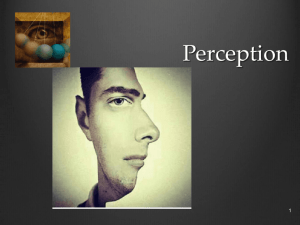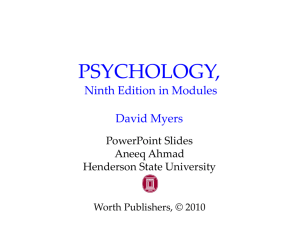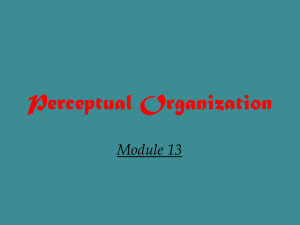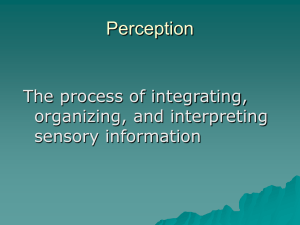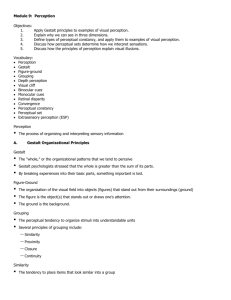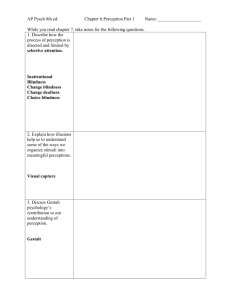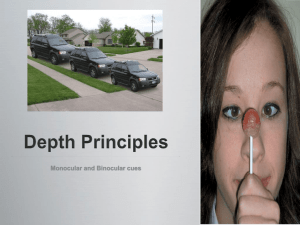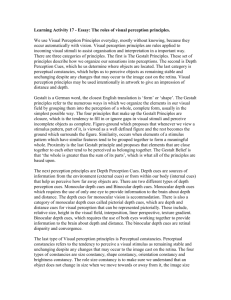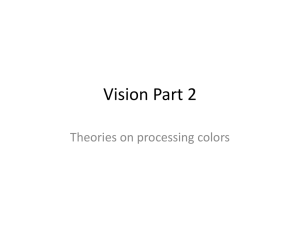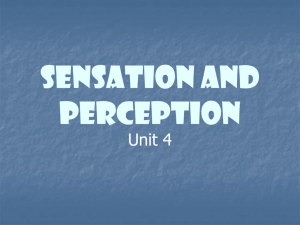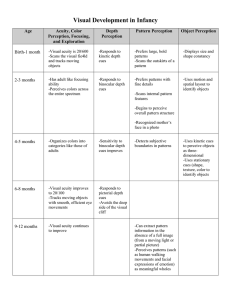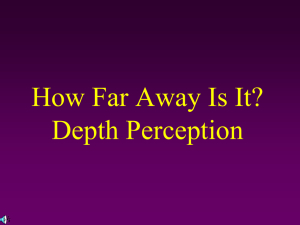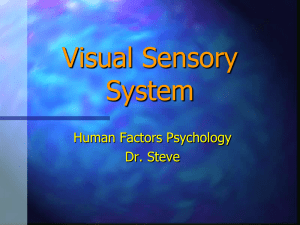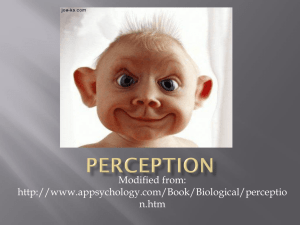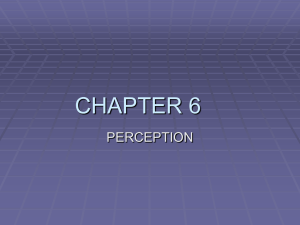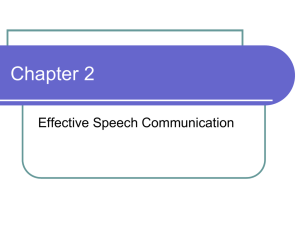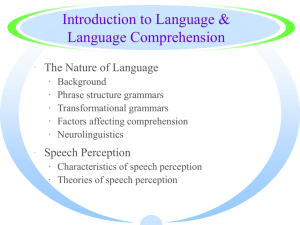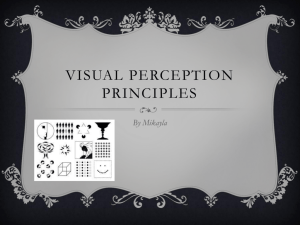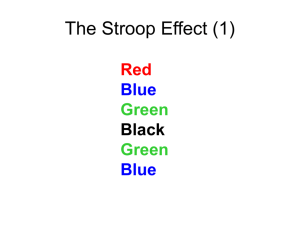Intro to Perception
advertisement
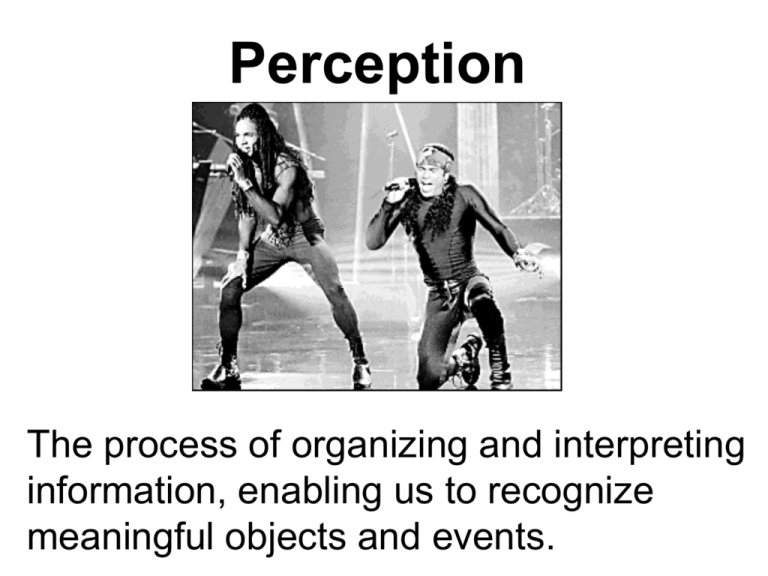
Perception The process of organizing and interpreting information, enabling us to recognize meaningful objects and events. The images are exactly the same except for the thick black area in the right image (an example of the Poggendorff illusion (1860)). In the figure on the right, there appear to be two continuous diagonal lines: a red and a blue line. What occurs in your visual system that could account for the appearance of the continuous diagonal lines? Visual Capture • The tendency for vision to dominate the other senses. Gestalt Psychology • Gestalt means “an organized whole” • These psychologists emphasize our tendency to integrate pieces of information into meaningful wholes Gestalt Philosophy The whole is greater than the sum of its parts Figure-Ground Relationship • The organization of the visual field into objects (figures) that stand out from their surroundings (ground) Grouping • The perceptual tendency to organize stimuli into groups that we understand Depth Perception • The ability to see objects in three dimensions although the images that strike the retina are two dimensional. • Allows us to judge distance. Visual Cliff How do we transform two-dimensional objects to three-dimensional perception? • Binocular Cues: depth cues that depend on two eyes •Monocular Cues: depth cues that depend on one eye Binocular Cues • Retinal Disparity: a binocular cue for seeing depth. • The closer an object comes to you the greater the disparity is between the two images. Pen together two eyes- try with one Monocular Cues • Interposition: if something is blocking our view, we perceive it as closer. •Relative Size: if we know that two objects are similar in size, the one that looks smaller is farther away. •Relative Clarity: we assume hazy objects are farther away. More Monocular Cues • Texture Gradient: the coarser it looks the closer it is. •Relative Height: things higher in our field of vision, they look farther away •Relative Motion: things that are closer appear to move more quickly. •Liner Perspective: Parallel lines seem to converge with distance. •Light and Shadow: Dimmer objects appear farther away because they reflect less light. Motion Perception • We perceive motion incredible well. • We judge mostly by the size of the object. Think about how cartoons work. Phi Phenomenon • An illusion of movement created when two or more adjacent lights blink on and off in succession. Perceptual Consistency • Perceiving objects as unchanging even as illumination and retinal images changes.

